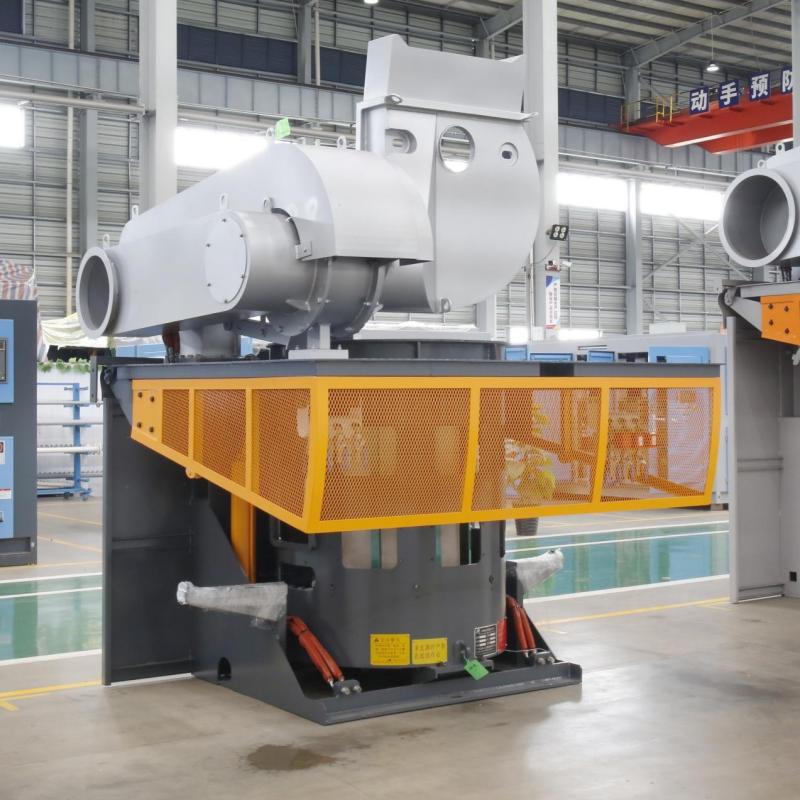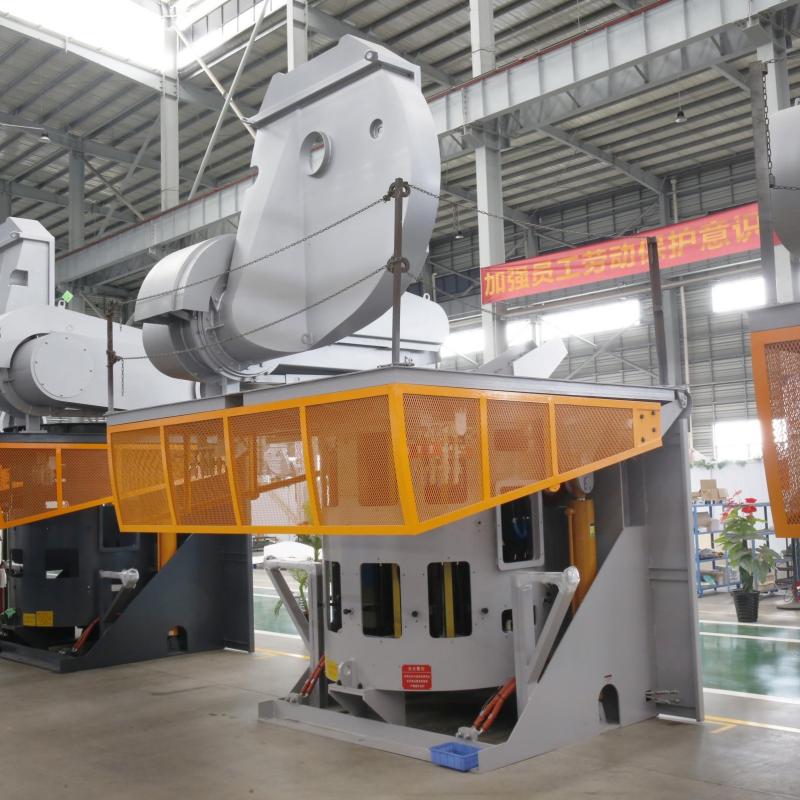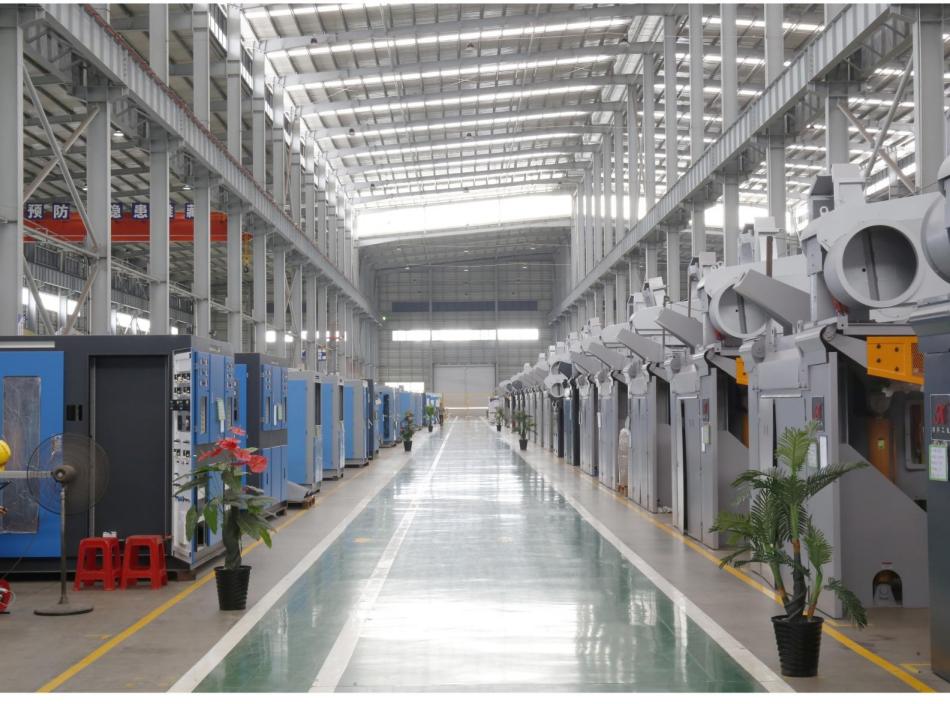
Furnace Induction Motors: Powering the Intermediate Frequency Coreless Induction Furnace
Induction furnaces are crucial in the metal casting industry, using electromagnetic induction to heat and melt metals. The heart of these furnaces is the furnace induction motor, which powers the induction process. Among these, intermediate frequency coreless induction furnaces stand out for their advanced technology and efficiency. Rongke’s Intermediate Frequency Coreless Induction Furnace exemplifies this advancement, boasting superior material quality, processing technology, and craftsmanship. Rongke’s meticulous production process ensures safety, stability, and energy efficiency, setting a high standard in the industry. Each detail, from design to production, adheres to strict requirements and inspection standards, guaranteeing customers experience Rongke’s top-notch quality firsthand.
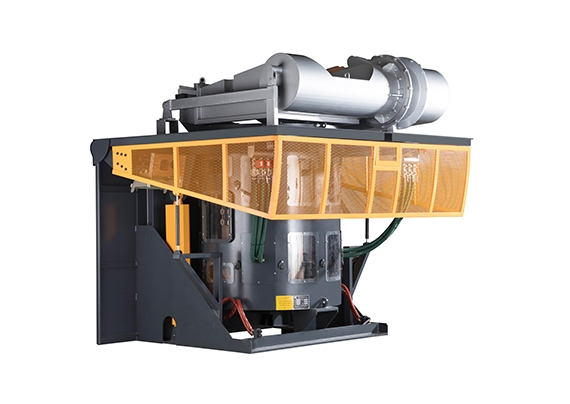
Understanding Furnace Induction Motors
Induction furnaces rely on furnace induction motors to convert electrical energy into mechanical energy for the induction process. These motors are built to withstand high temperatures and harsh conditions, making them essential for industrial use.
Types of Motors in Induction Furnaces
Two common types of motors used in induction furnaces are squirrel cage motors and slip ring motors. Squirrel cage motors are more prevalent and cost-effective, while slip ring motors are employed in applications requiring variable speed and torque control.
Motor Requirements for Intermediate Frequency Coreless Induction Furnaces
Motors for intermediate frequency coreless induction furnaces must meet specific criteria. They must efficiently handle the high frequencies typical of these furnaces and endure their demanding environments and temperatures.
Rongke IDE Furnace Leakage Alarm System
Rongke’s IDE system provides continuous and comprehensive monitoring for furnace leaks. It utilizes current and voltage detection electrodes to identify leaks. When molten iron comes into contact with these electrodes, the system triggers an alarm, pinpointing the exact leak location.
Furnace induction motors play a crucial role in induction furnace operations, with different types suited for various needs. Motors for intermediate frequency coreless induction furnaces have distinct requirements, and Rongke’s IDE system ensures safety and efficiency by promptly detecting and locating leaks.
The Role of Furnace Induction Motors
In intermediate frequency coreless induction furnaces, furnace induction motors play a crucial role in powering the melting process. These motors provide the necessary energy to create the electromagnetic fields that induce currents in the metal charge, leading to its rapid heating and melting.
Importance of Motor Efficiency
The efficiency of furnace induction motors is paramount for the overall performance of the furnace. Efficient motors ensure that the energy input is effectively converted into mechanical energy, minimizing wastage and reducing operating costs. Additionally, efficient motors contribute to the stability and reliability of the furnace operation.
Challenges and Solutions
Furnace induction motors face specific challenges in the context of intermediate frequency coreless induction furnaces. These challenges include the high-frequency operation, which can lead to increased heating and stress on the motor components. To address these challenges, motors need to be designed with robust materials and cooling systems to ensure reliable and efficient operation.
Furnace induction motors are integral to the operation of intermediate frequency coreless induction furnaces, powering the melting process and ensuring efficiency and reliability.
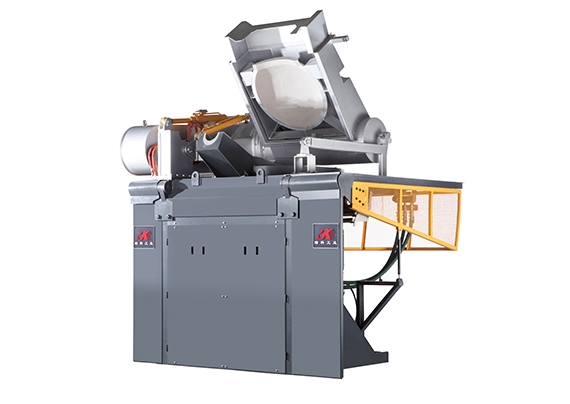
Advancements in Furnace Induction Motors
Recent Developments in Motor Technology
Recent advancements in motor technology for induction furnaces focus on improving efficiency, reliability, and safety. One notable advancement is the development of the IDE furnace leakage alarm system. This system, with its patented design and EU CE safety system certification, enhances safety by detecting and alerting operators to any leaks in the furnace lining or coil.
Magnet Yoke Technology
Another significant advancement is the use of magnet yoke technology. This technology involves the use of high-quality cold-rolling directional silicon steel sheets to create the magnet yoke. The magnet yoke supports the induction coil and gathers the induced magnetic field to the molten bath, improving efficiency and performance. The magnet yoke also combines cooling and support functions, making it maintenance-free and contributing to a longer working life.
Impact on Furnace Efficiency and Performance
These advancements have several advantages. The IDE furnace leakage alarm system improves safety and reliability, while magnet yoke technology enhances efficiency and performance. The use of premium silicon steel sheets and first-class design reduces magnetic loss, heat production, and noise levels. Additionally, the fully enclosed furnace shell prevents coil ignition caused by dust pollution and reduces magnetic radiation, meeting national standards.
Maintenance and Care of Furnace Induction Motors
Importance of Regular Maintenance
Regular maintenance is crucial for ensuring the longevity and efficient operation of furnace induction motors. By performing routine maintenance tasks, such as lubrication, cleaning, and inspection, operators can identify and address potential issues before they escalate, thus extending the motor’s lifespan.
Common Maintenance Practices
Common maintenance practices for furnace induction motors include checking for loose connections, inspecting the insulation for damage, and ensuring proper lubrication of bearings. Regular cleaning of the motor and surrounding area to prevent dust buildup is also important. Additionally, monitoring the motor’s temperature and vibration levels can help detect early signs of problems.
Role of Predictive Maintenance
Predictive maintenance plays a significant role in preventing downtime and reducing maintenance costs. By using techniques such as vibration analysis, thermal imaging, and oil analysis, operators can predict potential motor failures and schedule maintenance proactively. This approach minimizes unplanned downtime and ensures that the motor operates at peak performance.
In Closing
Furnace induction motors are vital components in the metal casting industry, powering the melting process in induction furnaces. Recent advancements in motor technology, such as the IDE furnace leakage alarm system and magnet yoke technology, have improved safety, efficiency, and performance. Proper maintenance and care are essential to ensure the longevity and reliable operation of these motors. Regular maintenance practices, including lubrication, cleaning, and inspection, can help identify and address potential issues early. Additionally, predictive maintenance techniques can further enhance motor reliability by predicting and preventing downtime. Overall, by understanding the importance of furnace induction motors and implementing appropriate maintenance practices, operators can ensure the efficient operation of their induction furnaces and prolong the lifespan of their motors.


